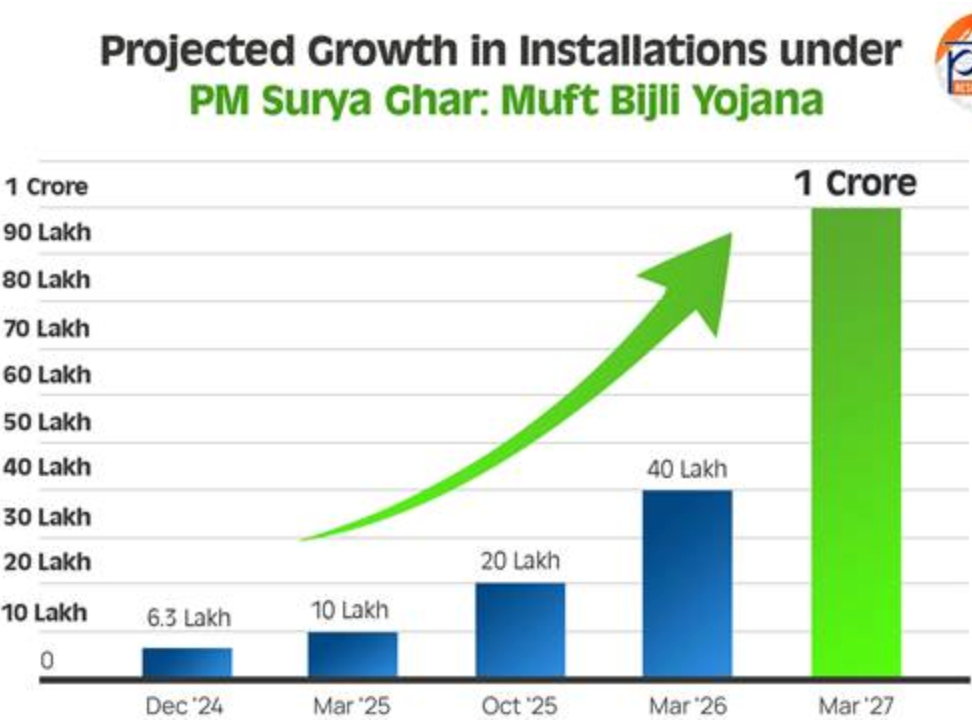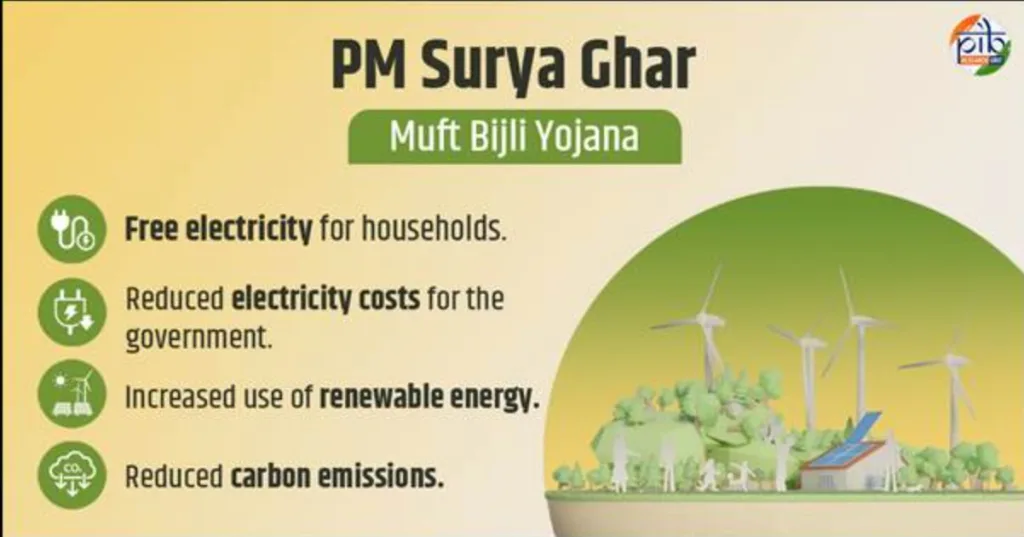Syllabus: GS2/Government Policy and Intervention; GS3/Energy
Context
- The Ministry of New and Renewable Energy (MNRE) has recently issued operational guidelines for the implementation of various components under the ‘PM-Surya Ghar: Muft Bijli Yojana’.

PM-Surya Ghar: Muft Bijli Yojana
- About: It was launched with the aim to promote the use of rooftop solar power in residential sectors under the Ministry of New and Renewable Energy (MNRE).
- Key Features:
- Subsidy and Financial Assistance: Offers a subsidy of up to 40% to reduce the upfront cost of rooftop solar installations.
- Payment Security Mechanism: Guarantees timely payments through DBT to vendors and installers, encouraging more participation from the private sector.
- Capacity Building and Training: Aims to create 3 lakh skilled manpower through fresh skilling and up-skilling programs.
- Ease of Application: The ‘National Portal for Rooftop Solar’ streamlines the application process.
- Model Solar Village: The “Model Solar Village” component aims to establish one solar-powered village per district across India, promoting energy self-reliance and solar adoption. ₹800 crore has been allocated, with ₹1 crore for each village.
Key Components of the Recent Guidelines
- Payment Security Mechanism (PSM): A ₹100 crore corpus fund has been established to de-risk investments in Renewable Energy Service Company (RESCO) based grid-connected rooftop solar models in the residential sector.
- This fund may be supplemented through other grants, funds, and sources after due approval from the Ministry.

- Implementation Models:
- RESCO Model: Third-party entities invest in rooftop solar installations, allowing consumers to pay only for the electricity consumed without bearing the upfront costs.
- Utility-Led Aggregation (ULA) Model: DISCOMs or state-designated entities will install rooftop solar projects on behalf of individual residential sector households.
- Central Financial Assistance (CFA): Aims to support 1 crore residential consumers in installing rooftop solar systems.
| India and Renewable Energy – Total Electricity Generation Capacity: 452.69 GW (October 2024); 1. Renewable Energy: 203.18 GW (about 46.3% of total installed capacity), surged from 178.98 GW in October 2023. 2. It aligns with the country’s ambitious renewable energy target of achieving 500 GW from non-fossil sources by 2030. – India’s Nationally Determined Contributions (NDCs) target to achieve about 50% cumulative electric power installed capacity from non-fossil fuel-based energy resources and to reduce the emission intensity of its GDP by 45% from 2005 level by 2030. Solar Energy in India – About 5,000 trillion kWh per year energy is incident over India’s land area with most parts receiving 4-7 kWh per sqm per day. – National Institute of Solar Energy (NISE) has assessed the country’s solar potential of about 748 GW assuming 3% of the waste land area to be covered by Solar PV modules. – National Solar Mission (NSM) is one of the key missions in India’s National Action Plan on Climate Change (NAPCC). |
Previous article
National Turmeric Board